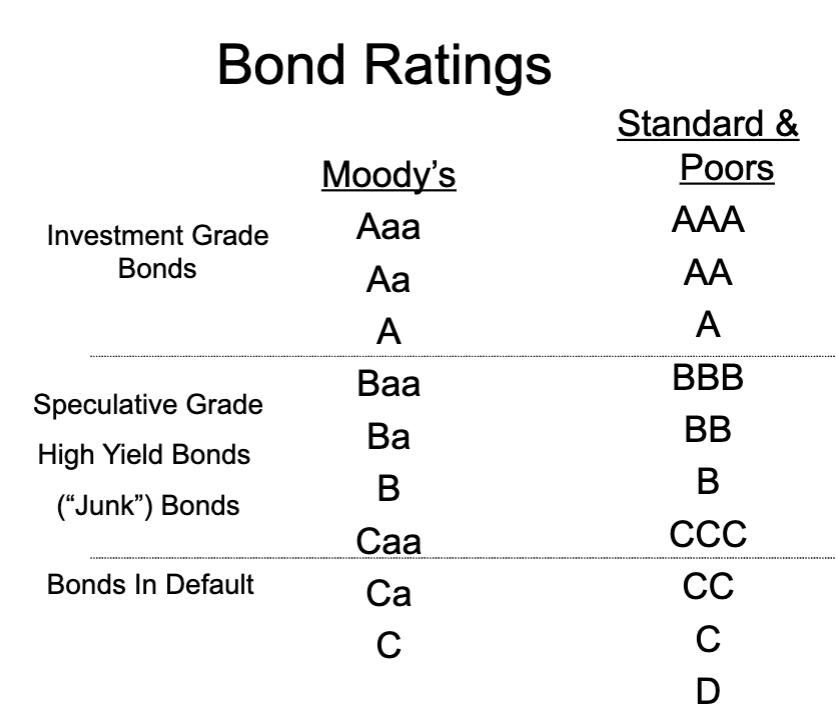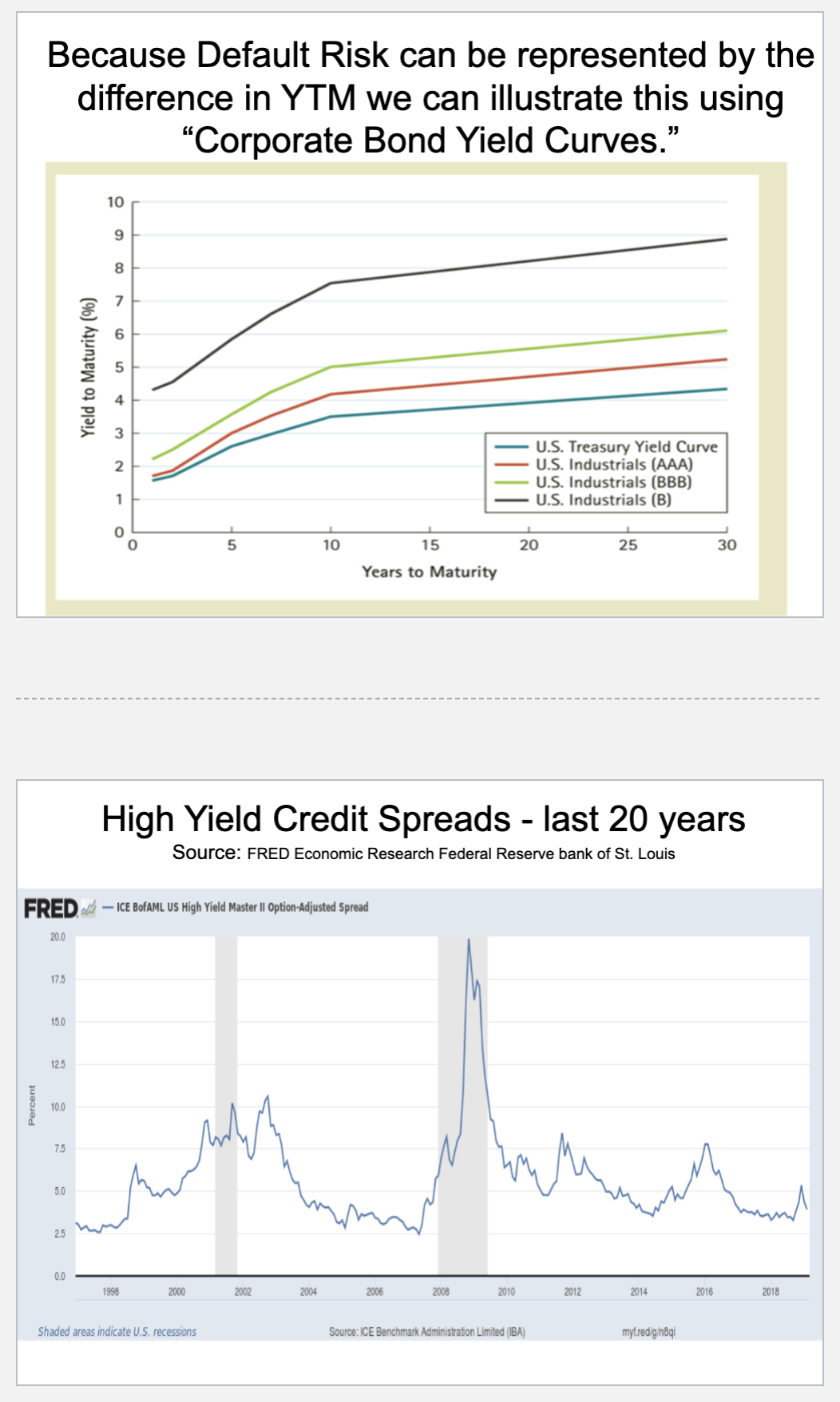Bond Valuation and Bond Markets
All Valuation Problems are the Same
• Establishing the value today of future cashflows is the central problem of Finance.
• Although we will often talk about a specific type of valuation problem (Bond, Stock, Project) it is important to recognize that these problems are all simply variations on a theme.
• Thinking about valuation as a generalized problem will simplify the subject of Finance.
Basics of Risk and Investor Required Returns
• So Far – Required return has been arbitrary.
• In Practice – Required return is linked to uncertainty about future cash flows.
• Determining the appropriate required return for a valuation application requires a framework to compare the uncertainty or “risk” of investment opportunities.
Generally:
– The more uncertain the cashflows of a particular investment the higher the risk.
– The higher the risk, the higher the required interest rate.
• In practice this relationship is more complicated and we will look at this later in the semester.
• For Now: Higher Risk results in Higher Required Return.
Basics of Security Valuation
• Security Markets trade in prices.
• Investor’s estimate future cashflows and discount them using the required return to establish the price.
• As cashflow estimates increase/(decrease) market prices increase/(decrease.)
• As investor required returns increase/(decrease) market prices decline/(increase.)
Basics of Bond Valuation
• Bond - The financial asset issued when the government or a corporation wants to borrow money.
• An investor “lends” the company money in return for a promise to receive:
– Regular interest payments until maturity
– The face value of the bond at maturity
Bond Definitions
• Maturity Date
– The contractual final redemption date.
• Principal or Face Value
– The value that the Issuer agrees to repay, this is the amount on which interest is generally calculated.
• Coupon Rate
– The stated interest rate paid under the bond.
– Usually the same as the market rate when the bond is originally issued.
– For most bonds this rate is fixed until maturity
Other Types of Bonds
• Callable Bonds - Bonds where a right (option) is granted to the Issuer to buy back the bond, usually at face value, before the Maturity Date.
• Convertible Bonds - Bonds where a right (option) is granted to the Investor to exchange the bond for some other specified security, usually common stock, before the Maturity Date.
• Zero-Coupon Bonds - Bonds that pay only the face value at maturity, no coupons.
Bond Markets
• Primary Market
– Auctions
– Investment Banks
• Secondary Markets
– Over-the-Counter (OTC) Markets
– Dealers and Brokers
Bond Valuation
Pricing a bond is a simple two step process
1. Define the cashflows.
2. Calculate the aggregate present value of the cashflows.
Example
– Five year 8% annual coupon bond
– Discount Rate of 8%
What happens if the discount rate drops to 6%?
What happens if the discount rate increases to 10%?
Bond Valuation
At a 8% discount rate the bond has a value of $1,000 which is the sum of the PV of the Cashflows.
Example: A 8% coupon bond matures in 2025. In 2020 the bond had these future cash flows:

If the required discount rate or Yield (y) on similar bonds is 8%. Then the value of 8% Coupon Bonds is

Bond Valuation
If the discount rate or Yield decreases, the value of the bond increases.
Example: A 8% coupon bond matures in 2025. The cash flows remain the same

If the required discount rate or Yield (y) on similar bonds is 6%.
Then the value of 8% Coupon Bonds is

If the required discount rate or Yield (y) on similar bonds is 10%.
Then the value of 8% Coupon Bonds is

Bond Valuation Using the Annuity Formula
• Value a Bond with a combination of the Annuity and the Present Value formulas.
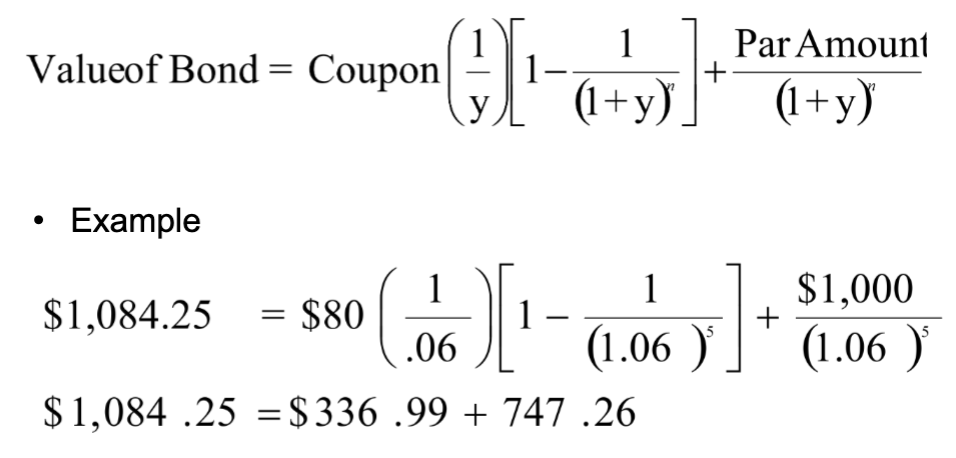
Yield to Maturity (YTM)
• Yield to Maturity - The single discount rate (internal rate of return) used to calculate the market price of the bond.
– Represents an estimate of the ex-ante expected return on the bond.
– Reflects the required market interest rate for the bond.
– Assumes the bond is held to maturity.
– Different than the coupon rate.
Interest Rates Up (Down) = Prices (Down) Up
• As interest rates increase the value of a bond decreases, conversely as interest rates decrease the value of a bond increases. Therefore generally the
following holds:
• coupon rate < required yield = discount price (<100)
• coupon rate = required yield = par price (100)
• coupon rate > required yield = premium price (>100)
Interest Rate Risk
• The fluctuations in price due to changes in interest rates is called interest rate risk. This risk is present in a bond even if the future cash flows are certain (i.e. risk free).
• This risk increases as maturity increases.
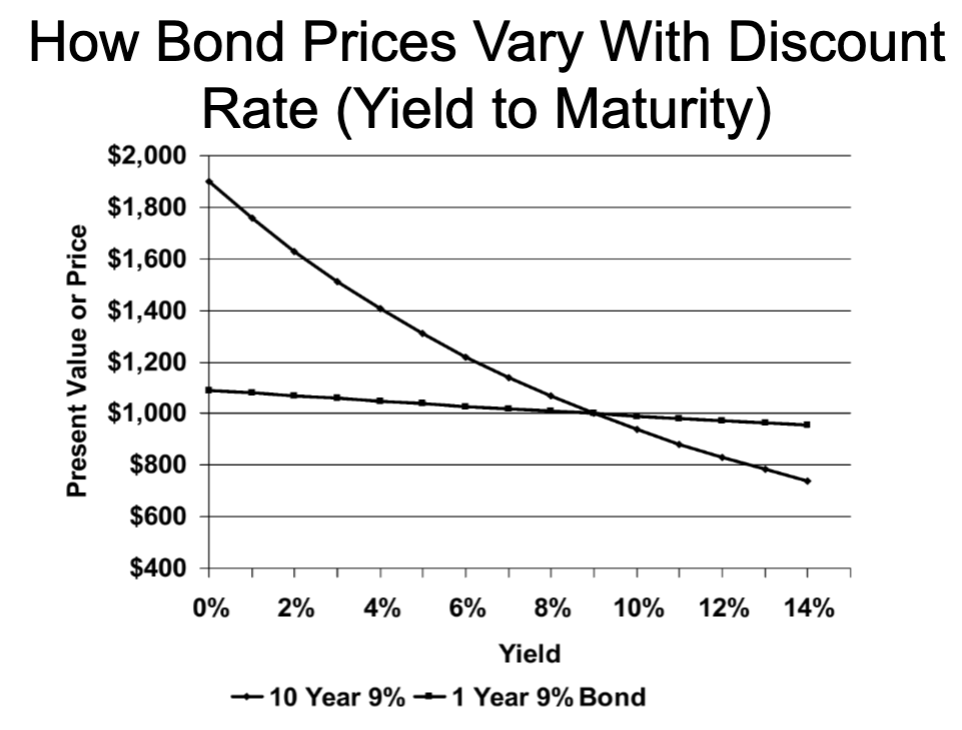
Calculating Returns
• Holding Period Return
– AKA - Internal Rate of Return (solve for r)
– N = maturity, PMT = coupon, FV = par, PV = price, solve for I/Y

Zero Coupon Bonds
• These bonds pay no coupon interest.
• Treasury bills, which are U.S government bonds with a maturity of up to one year, are issued as zero-coupon bonds.
• Your return is based on paying a discounted price initially and getting back the full par value at maturity.
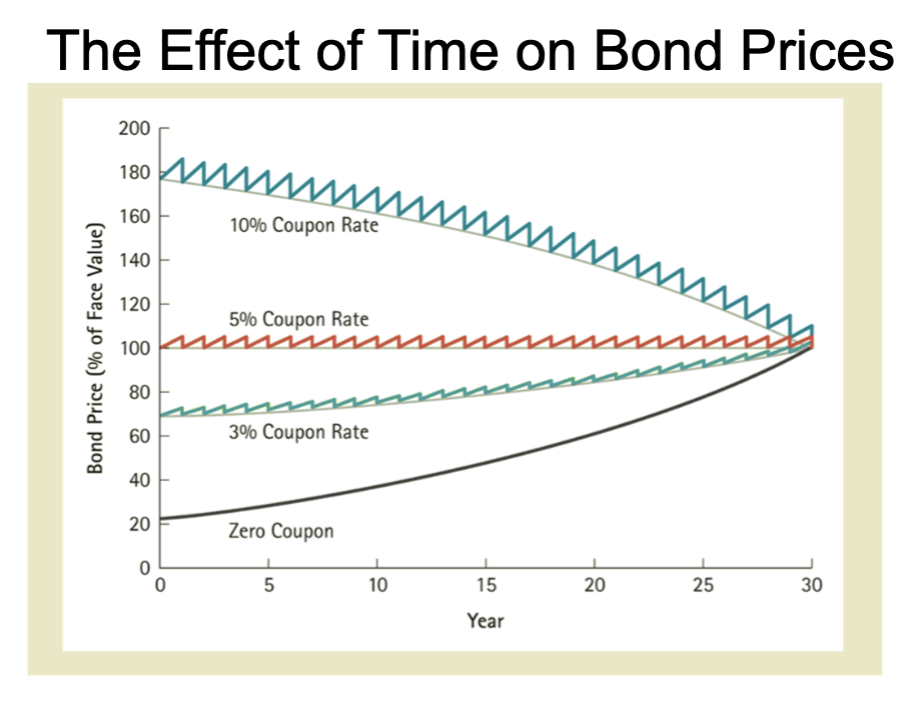
Corporate Bonds and Interest Rates
• The price of a five year 8% annual coupon corporate bond must be lower than the price of a five year 8% annual coupon Treasury bond since there is a possibility that the corporation might default, or fail to make the required payments in the future.
• Corporate issuers need to offer higher YTMs.
• The higher the perceived risk in the corporate bond the higher the YTM.
• The difference between treasury YTMs and corporate YTMs is called the spread or default premium.
Corporate Bond YTMs
• The cash flows promised by the bond are the most that bondholders can hope to receive.
• Due to credit risk, the cash flows that a purchaser of a corporate bond actually expects to receive may be less than that amount.
• Investors in these bonds incorporate an increased probability that the bond payments will not be made as promised and prices of the bond would fall.
• Yield to maturity of these bonds is computed by comparing the price to the promised cash flows
Estimating Default Risk
• The likelihood that a corporation will default on their bonds is reflected in the market prices of their bonds.
• This likelihood is also estimated by Bond Rating Agencies.
• There are numerous rating agencies, all of whom charge a fee (paid by the issuer) for their services.
• The two largest rating agencies are Moodys and Standard & Poors.
